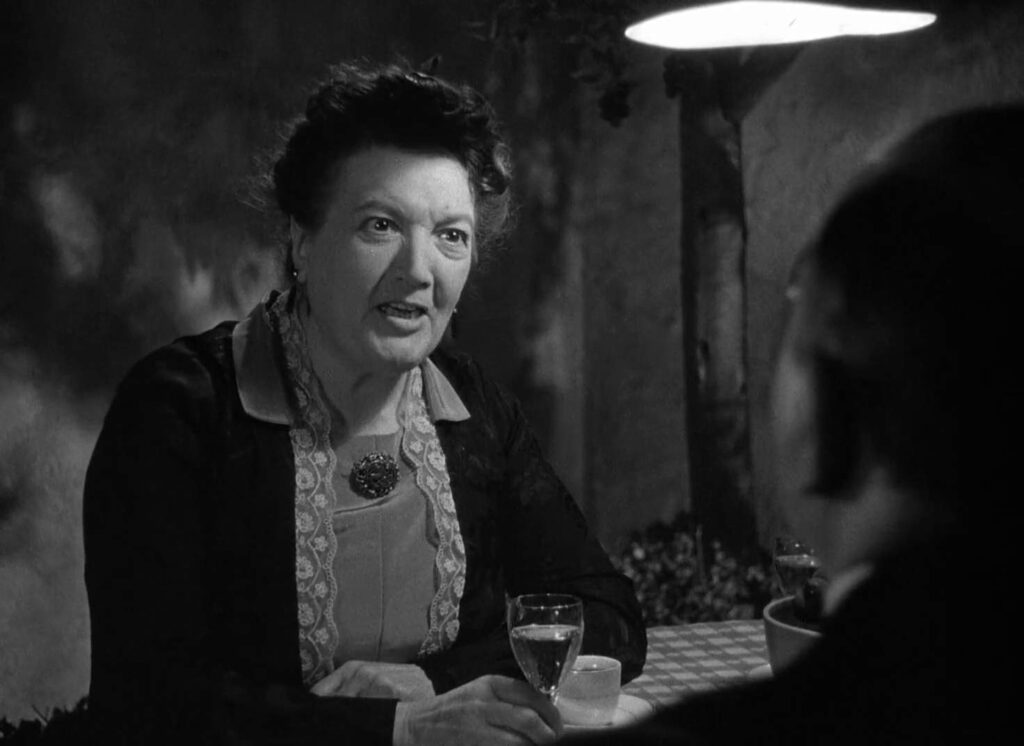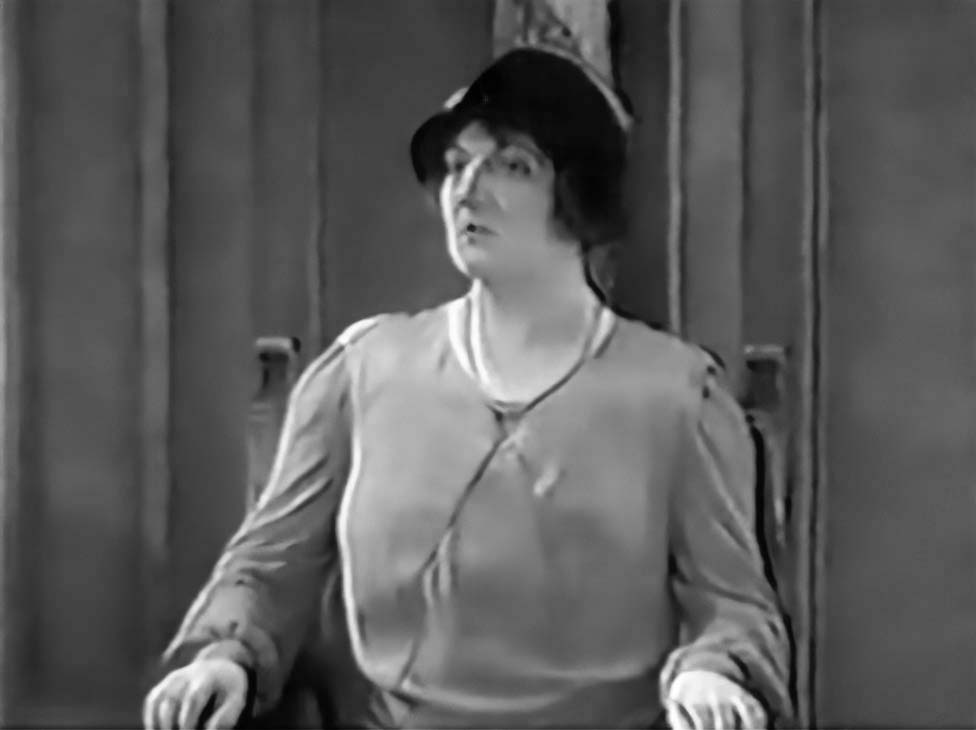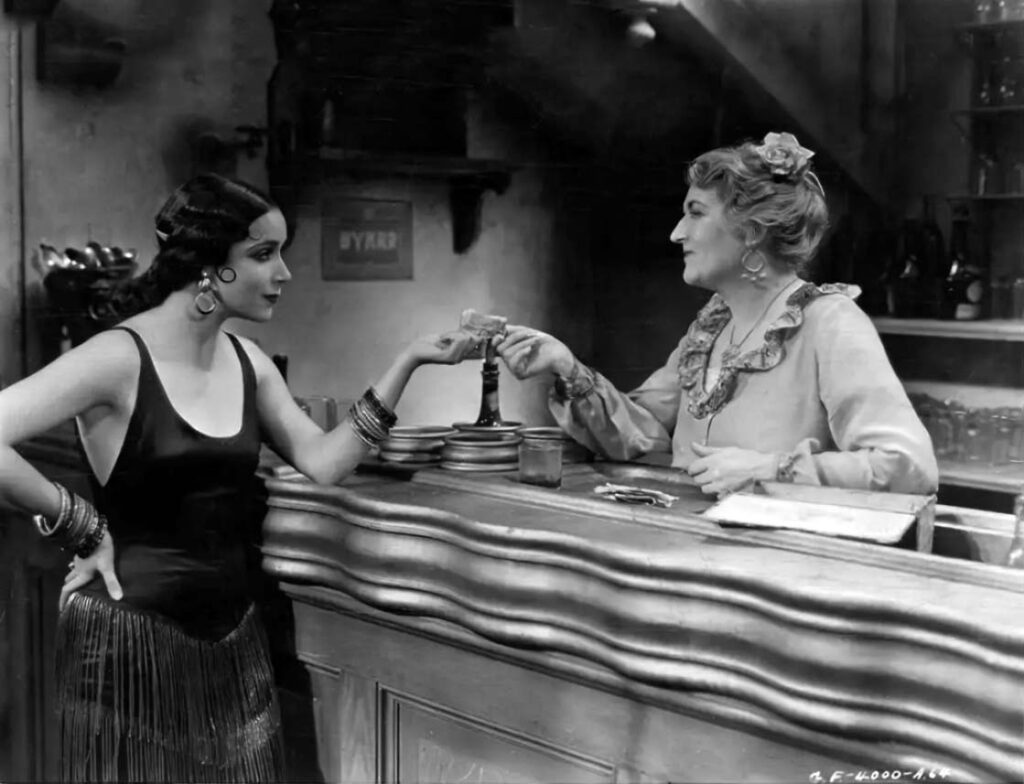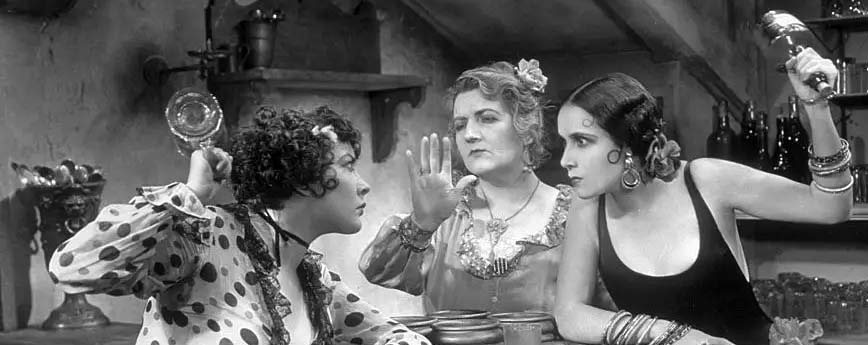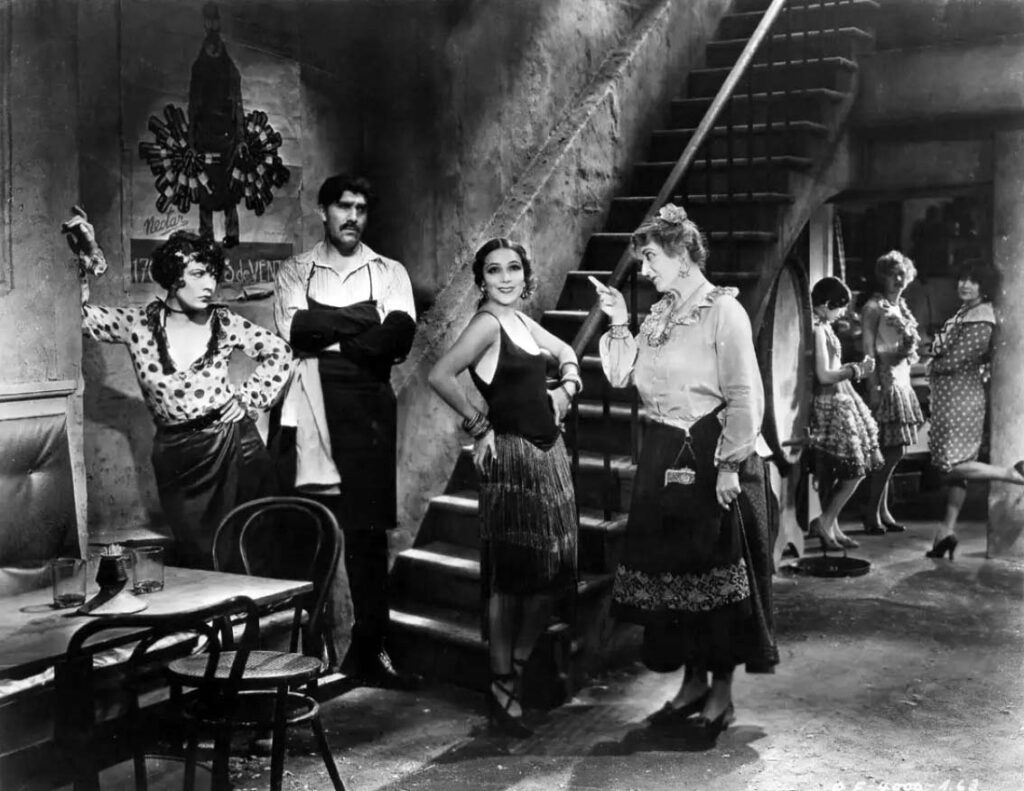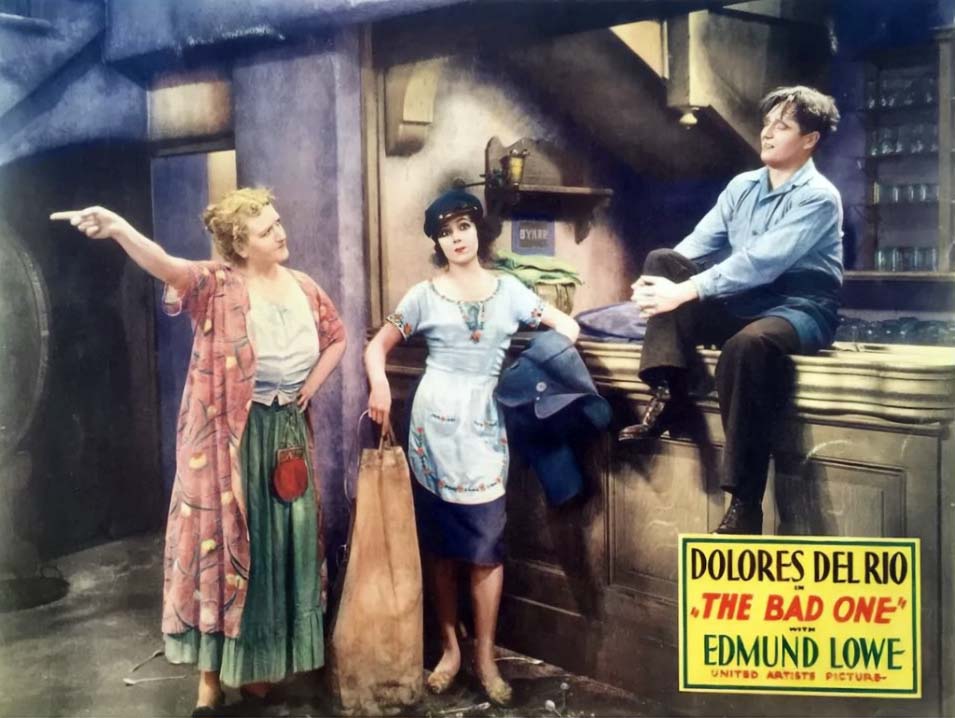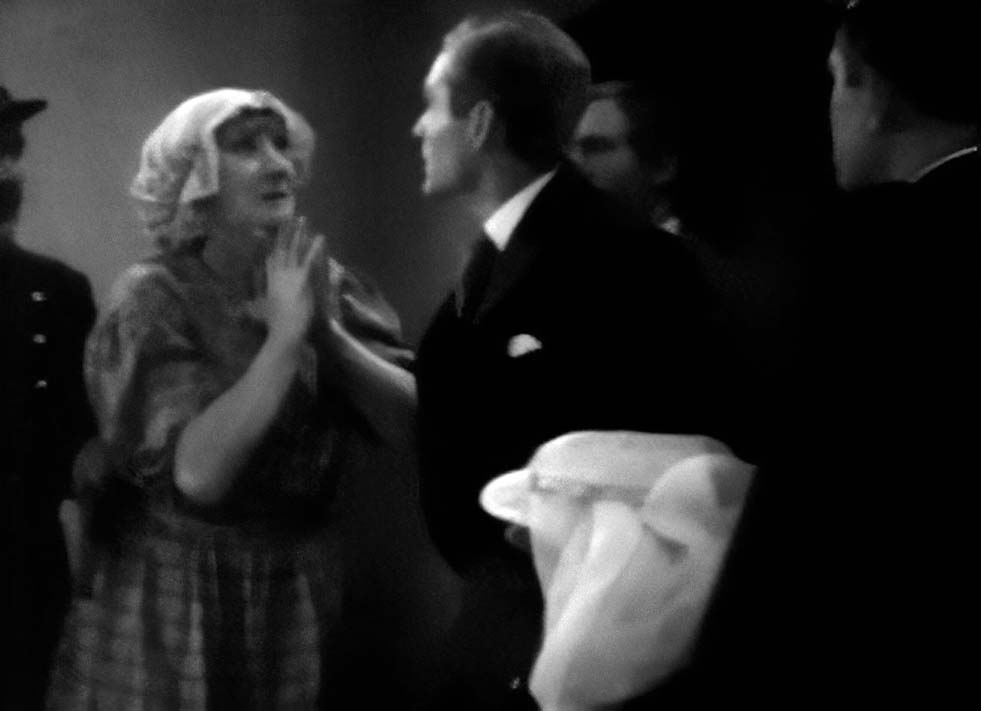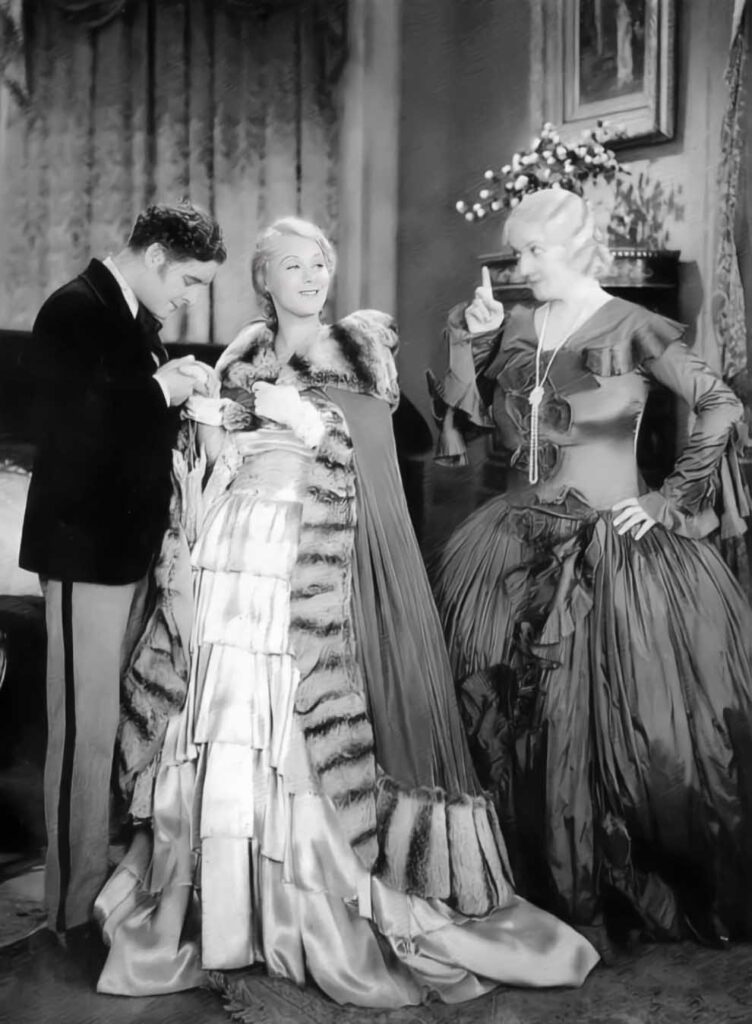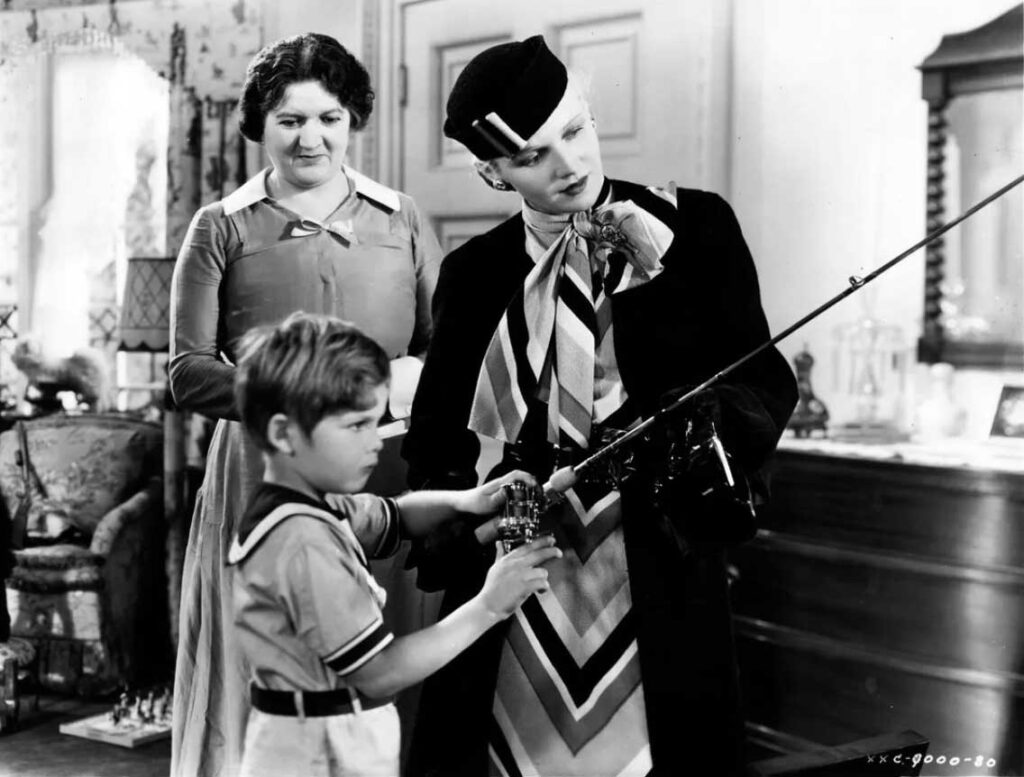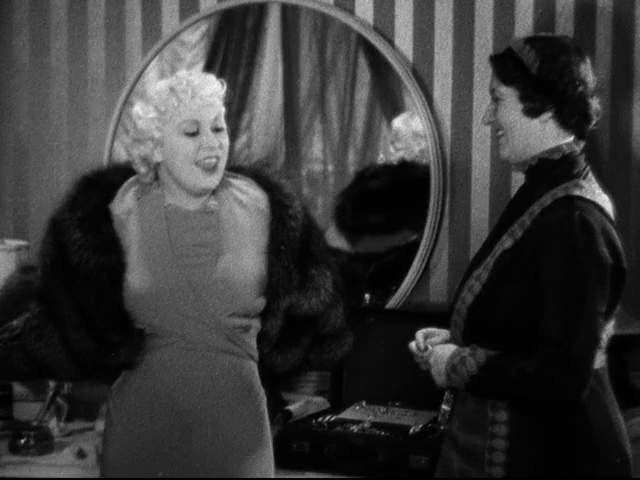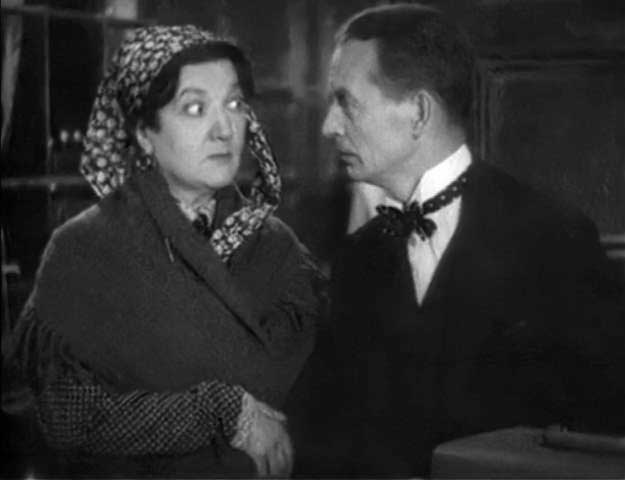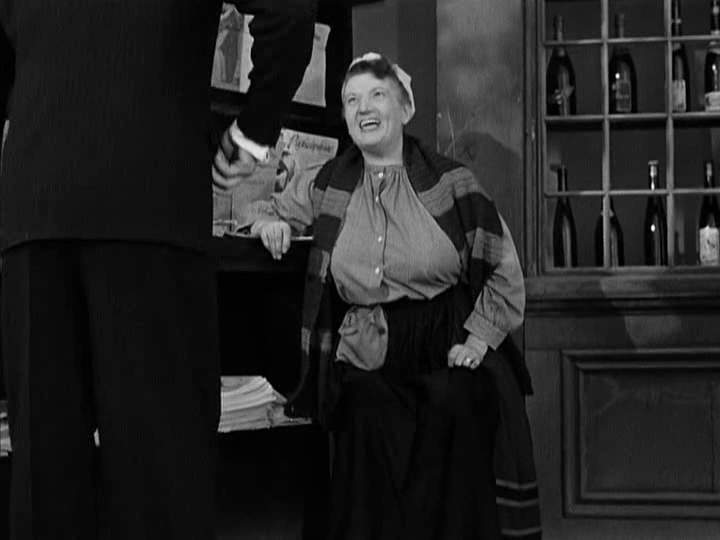Information
Full name: Adrienne Juliette Metsu
Birth: June 22, 1878 in Paris, France
Death: December 6, 1957 in Culver City, California (heart attack)
Marriages:
Émile Louis Dumontier (December 14, 1897 – March 5, 1906)
?
Job on Snow White:
Voice of the Queen in the first French version (uncredited)

Born Adrienne Juliette Metsu on June 22, 1878, she died of a heart attack after a car accident in Culver City on December 6, 1957. She was nearly 60 at the time of dubbing the first French version of Snow White.
Mme Dumontier’s Debut
Adrienne was born at 20 rue du Cirque in Paris at 4pm on June 22, 1878. She was the daughter of Juliette Léonie Metsu, a 21-year-old girl with no profession, and an unknown father. It was apparently only on December 14, 1895, that Juliette officially acknowledged being the child’s mother, if we are to believe the entry in the margin of the birth certificate.
On December 14, 1897, while still a minor living alone with her mother at 10 rue de la Trémoille in Paris, she married Émile Louis Dumontier, born on March 4, 1872, a tenor with the Théâtre Lyrique and later with L’Opéra Comique, after winning a prize for opera-comique and singing at the Conservatoire in 1897.
On the death of Félix Henri Carvalho, director of the Opéra Comique in 1899 and a personal friend of the couple whose marriage he had witnessed, Émile left for the Grand Théâtre de Bordeaux, where his wife made her stage debut. At the time, her husband was twenty-seven and she 20, and she was declared unprofessional, although an article dated June 26, 1899 informs us, without naming her, that Émile Dumontier “and his wife gave a concert” in London and he “was presented (…) to the Prince of Wales”. On July 5, she also sang “la chanson de Marthe”, accompanied on the piano by composer Beumber, who “warmly congratulated his performer”.
So we know that Adrienne had at least studied dramatic art even before her marriage: one of her wedding witnesses was Eugène Sylvain, then 46, a member of the Comédie Française and Chevalier de la Légion d’Honneur. He is specifically mentioned as a friend of the bride.
The couple were living at 5 place des Vosges in Paris on April 5, 1899, when she gave birth to their son, Jean Pierre Jules Dumontier, who was to become an actor. This temporarily halted her vocation.
The following year, her husband spent two years in Nantes, then one in Antwerp, before arriving at Lille’s Théâtre Kursaal in 1904. He then divided his time between Monte Carlo, Algiers, Ghent, Trouville, Dinard, Cabourg and Vittel. On the eve of the First World War, he staged shows at the Trianon Lyrique.
But as early as February 15, 1902, the young wife Dumontier, “La charmante et aimable femme de notre très aimé premier ténor”, attracted the attention of the newspaper La Silhouette, which informed us that she had abandoned her studies with Sylvain, a member of the Comédie Française, for her marriage, but had since been engaged by M. Villefranck, as had her husband. She played the role of the Queen in Ruy Blas in Nantes. She was praised for her ability to speak verse, a first for her, as well as for her beauty, diction and voice! And the article concludes: “No artist is better gifted than Mme Dumontier, none is worthy of being more loved; if the delightful woman is to continue her dramatic career, she can be sure that, in a time that is not far off, she will shine in the front rank of the artistic phalanx.”
One thing is certain: Adrienne has finally embraced her career, but for almost twenty years, her name remains discreet and no longer appears alongside that of her husband, though regularly mentioned in the press. The upbringing of their son is probably no coincidence. But it’s also likely that her divorce on March 5, 1906 explains Adrienne’s later return to the theater under a new name. Émile may have provoked this, as he remarried on September 20 of the same year. He died on January 6, 1930. Perhaps Adrienne returned to London, where she learned English and rebuilt her life.
The return of Madame D’Ambricourt
Where did she get her stage name? Was her family originally from the village of Ambricourt, in northern France, which might have inspired her to adopt this ennobling stage name abroad? Did her father finally recognize her, officially or otherwise? It doesn’t seem to be the name of a potential second husband who died before 1930, the year she declared herself a widow, but rather a stage name. The first theory seems the most likely: among the witnesses listed on the birth certificate are Léon Manchon, a 48-year-old Parisian annuitant, and above all Albert Houzet, a 27-year-old merchant from Wizernes, a village some 30 kilometers from Ambricourt. One of these wedding witnesses is also a merchant in Dunkirk.
In any case, Adrienne asks to adopt this name officially on August 6, 1935 (petition 47506). Here again, her previous declared name was “Dumontier”, which would seem to prove that Émile was her last and only husband until then.
Comœdia, June 10, 1921, reports the revival at London’s Saint-James Theatre of Louis Verneuil’s play “Daniel”, starring the great actress Sarah Bernhardt. In the small role of Mme Girard is Mme A. D’Ambricourt.
The Australian newspaper Table Talk, published in Melbourne on October 30, 1924, reminds us that, before arriving in the United States, Adrienne had been a member of the Comédie Française, and had indeed played in Sarah Bernhardt’s company. In any case, the notebook for the week of January 1, 1931 clarifies the Australian newspaper’s assertions: she is said to have received “her first acting lessons from Maurice de Féraudy”, who was indeed a member of the Comédie Française at the time, but may have been confused here with Sylvain. “She then appeared on the stage of the Comédie Française and at the Théâtre Sarah Bernhardt before moving to America, where she was much noticed on several New York stages.”
She emigrated to the USA shortly afterwards, that same year of 1921 if we are to believe her later census statements, apparently by way of Montreal in Canada before which she would have left in September, and the newspaper Le ménestrel of August 25, 1922 tells us that she lost no time in finding a stage role: she had already played the part of a baroness in “The French Doll”, with Irene Bordoni and Harry C. Browne, a play by Paul Amont and Marcel Giberdont, adapted into English by A. E. Thomas. In the Washington Evening Star of December 26, 1922, she is praised for her comic performance in a fake suicide scene with a blank revolver.
She apparently interrupted this tour to accept the artistic direction of a Montreal venue, the “Théâtre National”, now known as the “Théâtre des Nouveautés”, offered by impresario Louis Bourdon. This job was short-lived, however, as she returned to the U.S. in August 1923, where she settled for good. On November 11, 1929, she became an American citizen.
On stage, she also played David Belasco’s “Salvage” on December 7, 1925, and “Transgression” with Kay Francis on June 13, 1931. The February 3, 1932 issue of L’Intransigeant reveals that, with Charles and Mary K. Thomasset and Jacques Joujerville, she founded the Théâtre Français de Los Angeles, dedicated to performing plays from the Parisian repertoire.
Her film career began in 1924, when she appeared twice with Gloria Swanson. At this time, she is listed in the Yearbook of the Ripley School in Pennsylvania, as living at 534 Madison Avenue in New York.
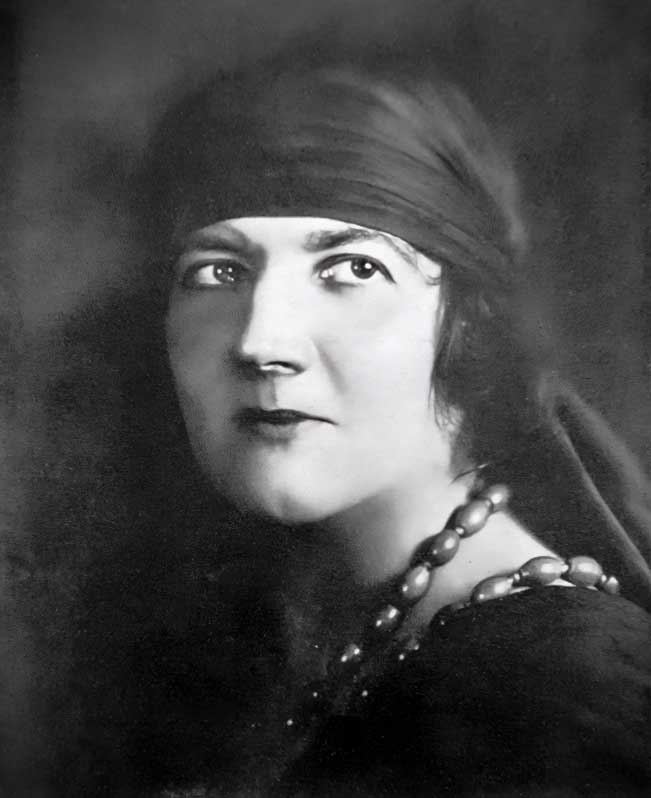
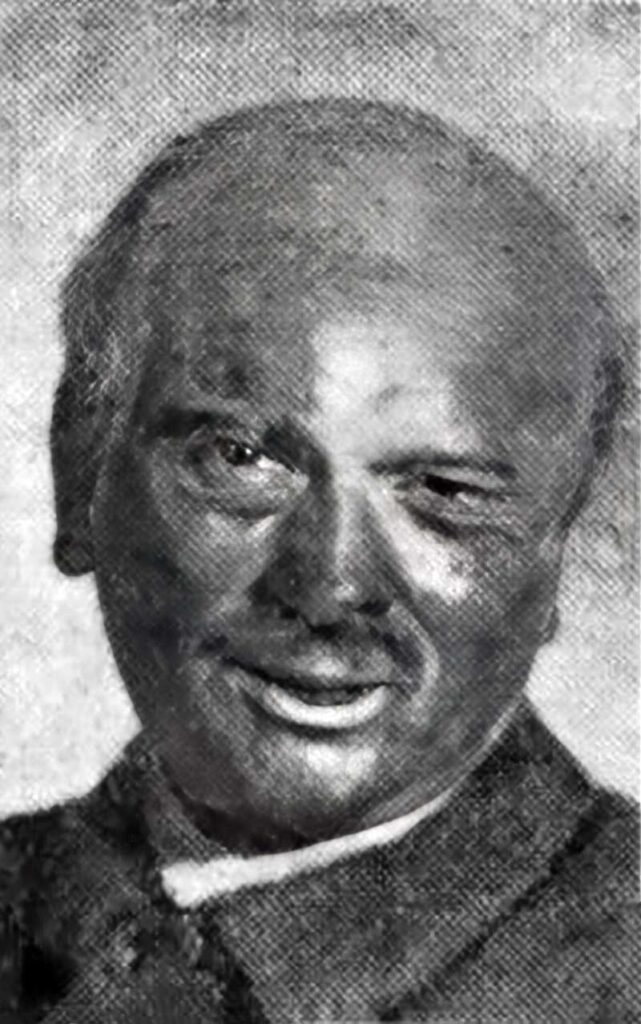
Her son, Jean Dumontier
It should be noted that, according to the newspaper, one of the actors in the Canadian theater troupe was named Jean Dumoutier, obviously an error on the part of the journalist.
He appears in the press as an actor in the play “Gens qui sourient” on December 22, 1921, then in “Le coucou magnifique”, and “On peut descendre”, “Le p’tit chasseur et ses maxims”, “L’enfant du miracle”, “Le contrôleur des wagons-lits”. After this play, mentioned until June 1922, Jean Dumontier disappeared from the Paris press, only to return on April 7, 1923 as a member of the Théâtre de Paris, having subscribed for the statue in honor of Sarah Bernhardt. The dates do indeed coincide for a little Canadian interlude.
Le Gaulois of April 18, 1925 announced Jean’s marriage, celebrated on the 8th, to actress Made Siamé (just 7 years younger than Adrienne), who had been attracting press attention since 1909. The bride and groom had a 14 year difference; at the time, and for more than 10 years to come, Jean played leading lady roles, while Made was soon confined to concierge roles, until, a few decades later, she played the unflattering role of “the fat lady” for director Georges Lacombe.
Jean then took on small screen roles from 1933 to at least 1939. Paris soir of May 1937 tells us that Jean Dumontier was one of the best French dubbing actors of the time. At the same time, he appeared several times on stage in comedy sketches with Alice Tissot, whom he married.
During the war, he appeared in “La Tante Anna” at the Théâtre de l’Étoile in February 1941, and at the Théâtre Pigalle in April, then at the Palais Royal with Alice Tissot in “L’Amour à l’ombre” and “Un bébé au pensionnat”. He also played the part of the bald man in “Signé Picpus”, a Maigret adventure, and in “Sylvie et le fantôme” at the Théâtre de l’Atelier in 1942, after which he disappeared so much that, while Paris was liberated, Adrienne placed an advert on December 17, 1944 and again on January 5, 1945 in France Amérique to find the famous Jean Dumontier, 47 avenue de la Motte-Picquet in the 15th arrondissement, and asked to be contacted at 438 Norwich drive in Los Angeles. And with good reason: on December 8, 1944, France-Soir revealed the reason: Jean had been arrested for collaboration on the grounds that he had taken part as announcer in the “La Rose des Vents” program on Radio Paris, and had earned 14,900 marks doing 735 broadcasts alongside, for example, Yves Furet and Jacques Marin, who were also arrested. But, unlike these two colleagues, it seems his career never recovered. He then became a journalist. At least, that’s the profession given on his death certificate.
He died on March 21, 1966 in the 15th arrondissement, at his home at 92 rue de Javel. He left behind what appears to have been his third wife, Madeleine Marguerite Herth, from whom he had apparently separated, since it was a stenodactylist friend, Lucienne Durand, born Clément, herself married, who lived at his home and declared his death.
Talking Pictures
With the arrival of talking pictures, Adrienne retained a place of choice in the cast of certain films, but was confined to French roles. She once again accompanied Gloria Swanson in her first attempt at the microphone. However, the need to film all export productions in several languages made her ideal, and she sometimes appeared in three versions of the same film, as in The Trial of Mary Dugan, where she played the same role of a key witness in the English, French and Spanish versions. To report on the shooting of the French version of A Lady’s Morals with Grace Moore at MGM, the newspaper La semaine mondaine ran the headline: “la nouvelle star française” (“the new French star”).
She seems to change accommodation as her fortune in the business changes. On April 23, 1930, she registered with the census as a widow, an actress in “talking pictures”, tenant of an apartment in District 55, Los Angeles, and born in France to a French father and mother. On November 8, 1935, at age 57, she lived at 127 Gillis Avenue Playa del Rey, Venice California. On April 25, 1940, she declared herself still a widow and a full-time French teacher and private tutor, living with two unemployed French-born sisters in a house she owned at 262 Waterview Avenue, valued at $6,000.

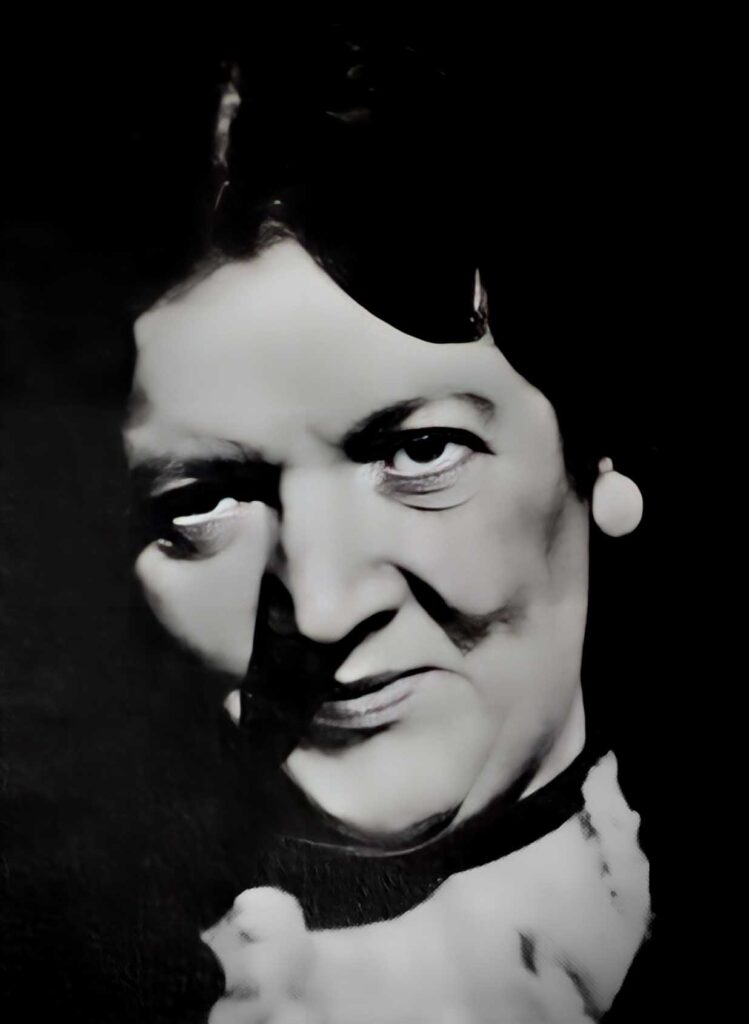
The Queen of Snow White
Like Lucille LaVerne, she plays both the Queen and the Witch, making the Queen perhaps a little less noble and less youthful, but certainly even more menacing.
So, in her dubbing days, she often played smaller roles on-screen. At this time, for example, she played a landlady pursuing deadbeats, Fred Astaire and Ginger Rogers in The Story of Vernon and Irene Castle (where she sang La Marseillaise with them). She had slightly more substantial roles in less prestigious productions such as Bulldog Drummond’s Bride, Pack Up Your Troubles or Seventh Heaven, where she was sometimes credited.
In the same year as the release of Snow White, she was the on-screen wife of André Cheron in Artists and Models Abroad, where she shared the screen with Eugene Borden, Jean de Briac, Charles de Ravenne and Louis Mercier, all of whom were cast in Snow White!
After Snow White
She registered the rights to a dramatic composition entitled “World Awakens” on September 4, 1942, under the name Adrienne Dumontier D’Ambricourt, as attested by the Catalog of Copyright Entries. Indeed, it seems that she writes: France Amérique of July 9, 1944 reports in its columns that at the closing session of the Alliance Française in San Diego, she gave a lecture on “French Writers in Exile and War Poets.”
On April 14, 1946, she declaimed Aragon (“Je vous salue ma France”) at a party in honor of the new French consul in Los Angeles.
Her Hollywood career was interrupted between 1947 and 1950, when she worked on a single French film, Bel Amour, probably so she could help her son. She then returned to Hollywood aboard the S.S. Île-de-France from October 23 to 30, 1950. Living at 903 Venezia Avenue, Venice, California, she was 72, married and an American citizen. It remains to be seen who this new husband might be.
Her last screen appearance appears to have been in the musical Les Girls.
